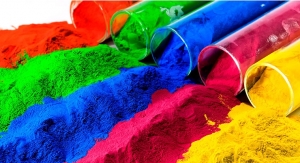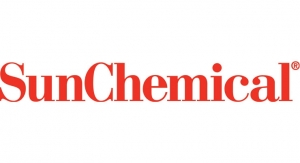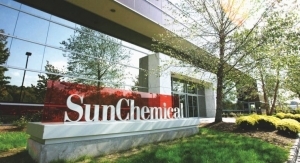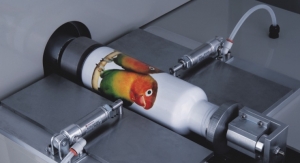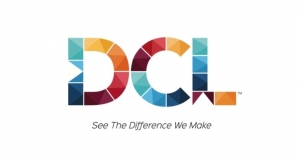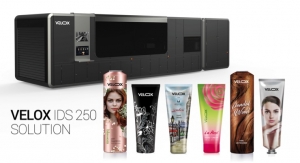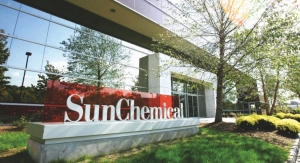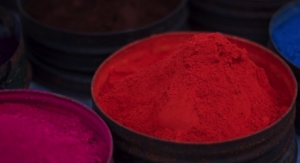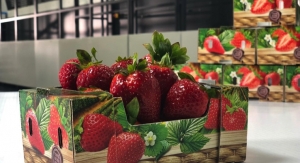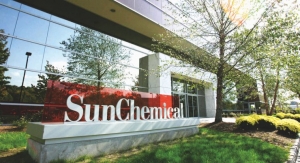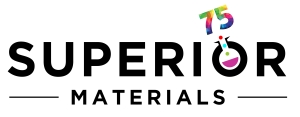By Dave Savastano, Editor03.23.15
35 Waterview Blvd.
Parsippany, NJ 07054
Phone: (973) 404-6000
Fax: (973) 404-6001
www.sunchemical.com
Sales: Sun Chemical had annual sales of $3.5 billion in printing inks and colorants worldwide. North American Ink Sales: $1.5 billion (Ink World estimate).
Major Products: Broad product portfolio with capabilities in web heatset and sheetfed offset; publication and packaging gravure; news ink and publication coldset; flexographic packaging inks; corrugated packaging inks; energy curable inks and coatings; screen inks, label and narrow web inks, toner, inkjet materials, adhesives for packaging, overprint varnishes, specialty coatings, effect inks, flexographic printing plates, digital artwork file management, color software and brand color management, printed electronics, security inks and coatings, and organic colorants for inks, plastics, paints, coatings and cosmetics.

Charles Murray
Key Personnel: Rudi Lenz, president and CEO, Sun Chemical and Board member; Charles Murray, president, North American Inks; Fernando Tavara, president, Sun Chemical Latin America; Myron Petruch, president, Performance Pigments; Greg Hayes, group managing director, Europe Northern Region; Robert Fitzka, group managing director, Europe Central Region; Carlo Musso, group managing director, Europe Southern Region; Mehran Yazdani, GM, DIC America & Electronic Materials; John McKeown, senior VP, chief administration officer; Russell Schwartz, chief technology officer; Edward Pruitt, chief procurement officer; Martin Cellerier, VP, corporate strategy; Gerry Brady, CFO; Jeffrey Shaw, VP supply chain; Brian Panczyk, VP operations and engineering; Felipe Mellado, chief marketing officer and Board member; James Van Horn, general counsel and secretary; Bradley Schrader, VP, corporate planning.
Number of Employees: More than 8,000 worldwide.
Operating Facilities: Sun Chemical has 250 locations in more than 56 countries.

Comments: Sun Chemical had a strong year in 2014, with the company developing new markets and making gains in the packaging segment. With Sun Chemical’s new emphasis on providing an end-to-end solution for its customers, the company is finding new opportunities for growth.
“Overall, Sun Chemical had a very good 2014 in North America,” said Charles Murray, president of Sun Chemical North American Inks. “While there were ongoing declines in the publications and commercial sheetfed areas, we are seeing solid growth in the packaging markets. We have had growth in all the sectors of packaging including narrow web tag and label, flexible packaging and folding carton as well as seeing growth in our plates and coatings businesses in the U.S. and Canada. This continues to be a primary focus.”
Sun Chemical is looking to be more than just an ink-only company, but rather as a specialist in fluid management, helping customers throughout the printing process.
“Our business is fluid management,” Murray said. “We’re not just an ink company any more. When you look at it like that, the opportunity in the marketplace is enormous and varied.
“We are looking to grow different areas,” Murray added. “We are investing to support growth in packaging, adding new facilities and developing new technologies that are not just inks. We offer flexo plates, specialty and functional coatings. We can design packaging and manipulate the design for all printing processes. Our strategy is to be an end-to-end partner with our customer, but not just with the supply of consumables.”
The Virtual Inplant program is one area where Sun Chemical is working with printers to more efficiently use its materials. With the Virtual Inplant, Sun Chemical has created a way for printers to consistently monitor their fountain solutions to tight specifications to cut down on variables, complications and waste. Real-time digital reports are provided to monitor pH balance, temperature, flow rate and conductivity.
“Our Virtual Implant manages press chemistry, and is receiving huge interest from offset printers,” Murray said. “Reducing cost through waste reduction is a priority in this competitive market.”
Sun Chemical is enjoying growth in its packaging ink business, and the ability to move into other segments is also proving promising. “Our packaging ink business is now a significant part of our revenue, but we don’t want to just be a packaging ink company,” Murray said. “Fluid management allows us to go into other areas.”
One such area is industrial applications, covering a wide range of niche products.
“Our new Industrial Applications Division offers new areas for us, from automotive and white goods applications to vinyl flooring, printed effects on furniture and plastic cards,” Murray said. “DIC is the world’s largest manufacture of magnetic tape for plastic cards. We can add the ink effects, overt and covert security features and provide technologies such as RFID antennas.”
“There are also other areas of the printing industry that are growing,” Murray added. “There is increasing interest in areas such as printed electronics and specialty packaging. The packaging market overall is growing at around 1% - 2%, and there are emerging areas that are providing new opportunities. Digital printing continues to be an area of growth, and one that Sun Chemical continues to expand its presence in globally.”
On the inkjet side, Sun Chemical has also been active. The company entered the aftermarket in North America with its Streamline wide format inks for POP and vehicle and building wraps. Murray noted that Sun Chemical added a customer demonstration facility in Northlake, IL, and has plans to launch textile inks in the coming year.
Regulatory concerns over areas such as food packaging are becoming more commonplace throughout the printing and ink industries, and Sun Chemical is developing solutions for their customers.
“Regulatory issues will always be a part of our business,” Murray noted.
“When you look at formulating products, there are substances that were commonplace five years ago and can’t be used today,” Murray observed. “There are more regulations today, and we have the resources to meet these mandates. We developed Ultra Low Migration inks to meet stricter standards in areas that legislation and brand owners demand.”
Murray noted that the raw material situation has largely stabilized at a high price level, and added that the reduction in the price of crude oil doesn’t necessarily translate to all areas of ink manufacturing.
“The raw material situation in 2014 was more stable that has been in the past, yet costs remain at a higher level for some of the key raw materials,” Murray said. “We never returned to prior levels. There are still areas of volatility that affect our manufacturing – areas such as some resins and solvents have seen inflation.”
Murray added that Sun Chemical’s outlook for 2015 and beyond continues to be optimistic.
“The marketplace is never without challenge,” he said. “Our customers challenge us to provide better products, higher levels of service and lower costs. Our competitors challenge us on various fronts. The raw materials situation and our suppliers challenge us – but that is what keeps us getting better and better as an organization. We are very well positioned to exceed our customers’ expectations. We have a great team in place, we provide a great product and world-class service so we look forward to meeting challenges in the upcoming years.
“We’ve created a business with no shortage of opportunities,” Murray concluded. “We’re on the right track; 2013 and 2014 were good years, and we want to grow in 2015 and beyond. These are exciting times for us.”
Parsippany, NJ 07054
Phone: (973) 404-6000
Fax: (973) 404-6001
www.sunchemical.com
Sales: Sun Chemical had annual sales of $3.5 billion in printing inks and colorants worldwide. North American Ink Sales: $1.5 billion (Ink World estimate).
Major Products: Broad product portfolio with capabilities in web heatset and sheetfed offset; publication and packaging gravure; news ink and publication coldset; flexographic packaging inks; corrugated packaging inks; energy curable inks and coatings; screen inks, label and narrow web inks, toner, inkjet materials, adhesives for packaging, overprint varnishes, specialty coatings, effect inks, flexographic printing plates, digital artwork file management, color software and brand color management, printed electronics, security inks and coatings, and organic colorants for inks, plastics, paints, coatings and cosmetics.
Charles Murray
Number of Employees: More than 8,000 worldwide.
Operating Facilities: Sun Chemical has 250 locations in more than 56 countries.
“Overall, Sun Chemical had a very good 2014 in North America,” said Charles Murray, president of Sun Chemical North American Inks. “While there were ongoing declines in the publications and commercial sheetfed areas, we are seeing solid growth in the packaging markets. We have had growth in all the sectors of packaging including narrow web tag and label, flexible packaging and folding carton as well as seeing growth in our plates and coatings businesses in the U.S. and Canada. This continues to be a primary focus.”
Sun Chemical is looking to be more than just an ink-only company, but rather as a specialist in fluid management, helping customers throughout the printing process.
“Our business is fluid management,” Murray said. “We’re not just an ink company any more. When you look at it like that, the opportunity in the marketplace is enormous and varied.
“We are looking to grow different areas,” Murray added. “We are investing to support growth in packaging, adding new facilities and developing new technologies that are not just inks. We offer flexo plates, specialty and functional coatings. We can design packaging and manipulate the design for all printing processes. Our strategy is to be an end-to-end partner with our customer, but not just with the supply of consumables.”
The Virtual Inplant program is one area where Sun Chemical is working with printers to more efficiently use its materials. With the Virtual Inplant, Sun Chemical has created a way for printers to consistently monitor their fountain solutions to tight specifications to cut down on variables, complications and waste. Real-time digital reports are provided to monitor pH balance, temperature, flow rate and conductivity.
“Our Virtual Implant manages press chemistry, and is receiving huge interest from offset printers,” Murray said. “Reducing cost through waste reduction is a priority in this competitive market.”
Sun Chemical is enjoying growth in its packaging ink business, and the ability to move into other segments is also proving promising. “Our packaging ink business is now a significant part of our revenue, but we don’t want to just be a packaging ink company,” Murray said. “Fluid management allows us to go into other areas.”
One such area is industrial applications, covering a wide range of niche products.
“Our new Industrial Applications Division offers new areas for us, from automotive and white goods applications to vinyl flooring, printed effects on furniture and plastic cards,” Murray said. “DIC is the world’s largest manufacture of magnetic tape for plastic cards. We can add the ink effects, overt and covert security features and provide technologies such as RFID antennas.”
“There are also other areas of the printing industry that are growing,” Murray added. “There is increasing interest in areas such as printed electronics and specialty packaging. The packaging market overall is growing at around 1% - 2%, and there are emerging areas that are providing new opportunities. Digital printing continues to be an area of growth, and one that Sun Chemical continues to expand its presence in globally.”
On the inkjet side, Sun Chemical has also been active. The company entered the aftermarket in North America with its Streamline wide format inks for POP and vehicle and building wraps. Murray noted that Sun Chemical added a customer demonstration facility in Northlake, IL, and has plans to launch textile inks in the coming year.
Regulatory concerns over areas such as food packaging are becoming more commonplace throughout the printing and ink industries, and Sun Chemical is developing solutions for their customers.
“Regulatory issues will always be a part of our business,” Murray noted.
“When you look at formulating products, there are substances that were commonplace five years ago and can’t be used today,” Murray observed. “There are more regulations today, and we have the resources to meet these mandates. We developed Ultra Low Migration inks to meet stricter standards in areas that legislation and brand owners demand.”
Murray noted that the raw material situation has largely stabilized at a high price level, and added that the reduction in the price of crude oil doesn’t necessarily translate to all areas of ink manufacturing.
“The raw material situation in 2014 was more stable that has been in the past, yet costs remain at a higher level for some of the key raw materials,” Murray said. “We never returned to prior levels. There are still areas of volatility that affect our manufacturing – areas such as some resins and solvents have seen inflation.”
Murray added that Sun Chemical’s outlook for 2015 and beyond continues to be optimistic.
“The marketplace is never without challenge,” he said. “Our customers challenge us to provide better products, higher levels of service and lower costs. Our competitors challenge us on various fronts. The raw materials situation and our suppliers challenge us – but that is what keeps us getting better and better as an organization. We are very well positioned to exceed our customers’ expectations. We have a great team in place, we provide a great product and world-class service so we look forward to meeting challenges in the upcoming years.
“We’ve created a business with no shortage of opportunities,” Murray concluded. “We’re on the right track; 2013 and 2014 were good years, and we want to grow in 2015 and beyond. These are exciting times for us.”

